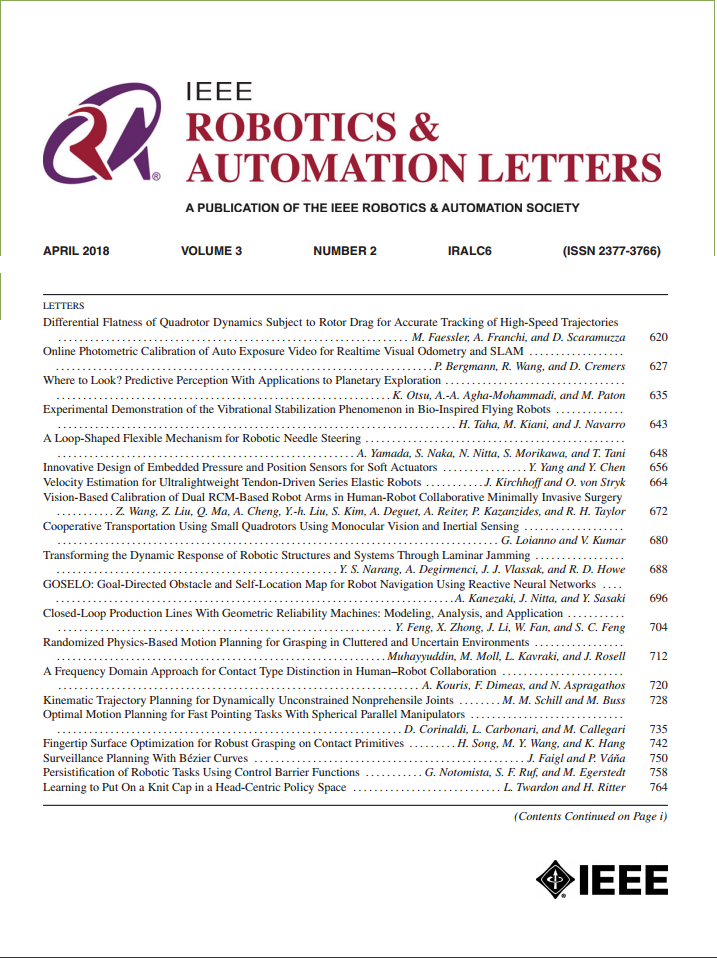First-Person View Interfaces for Teleoperation of Aerial Swarms
IF 4.6
2区 计算机科学
Q2 ROBOTICS
引用次数: 0
Abstract
Aerial swarms can substantially improve the effectiveness of drones in applications such as inspection, monitoring, and search for rescue. This is especially true when those swarms are made of several individual drones that use local sensing and coordination rules to achieve collective motion. Despite recent progress in swarm autonomy, human control and decision-making are still critical for missions where lives are at risk or human cognitive skills are required. However, first-person-view (FPV) teleoperation systems require one or more human operators per drone, limiting the scalability of these systems to swarms. This work investigates the performance, preference, and behaviour of pilots using different FPV interfaces for teleoperation of aerial swarms. Interfaces with single and multiple perspectives were experimentally studied with humans piloting a simulated aerial swarm through an obstacle course. Participants were found to prefer and perform better with views from the back of the swarm, while views from the front caused users to fly faster but resulted in more crashes. Presenting users with multiple views at once resulted in a slower completion time, and users were found to focus on the largest view, regardless of its perspective within the swarm.求助全文
约1分钟内获得全文
求助全文
来源期刊

IEEE Robotics and Automation Letters
Computer Science-Computer Science Applications
CiteScore
9.60
自引率
15.40%
发文量
1428
期刊介绍:
The scope of this journal is to publish peer-reviewed articles that provide a timely and concise account of innovative research ideas and application results, reporting significant theoretical findings and application case studies in areas of robotics and automation.
 求助内容:
求助内容: 应助结果提醒方式:
应助结果提醒方式:


